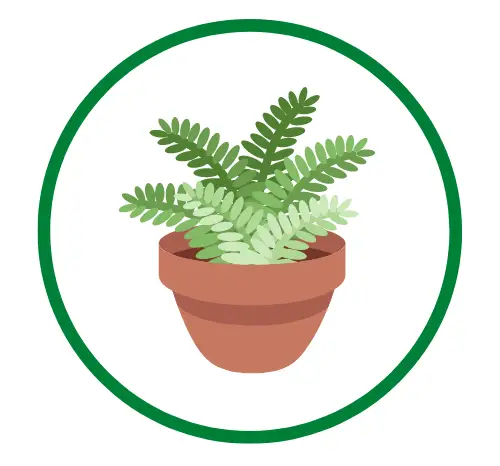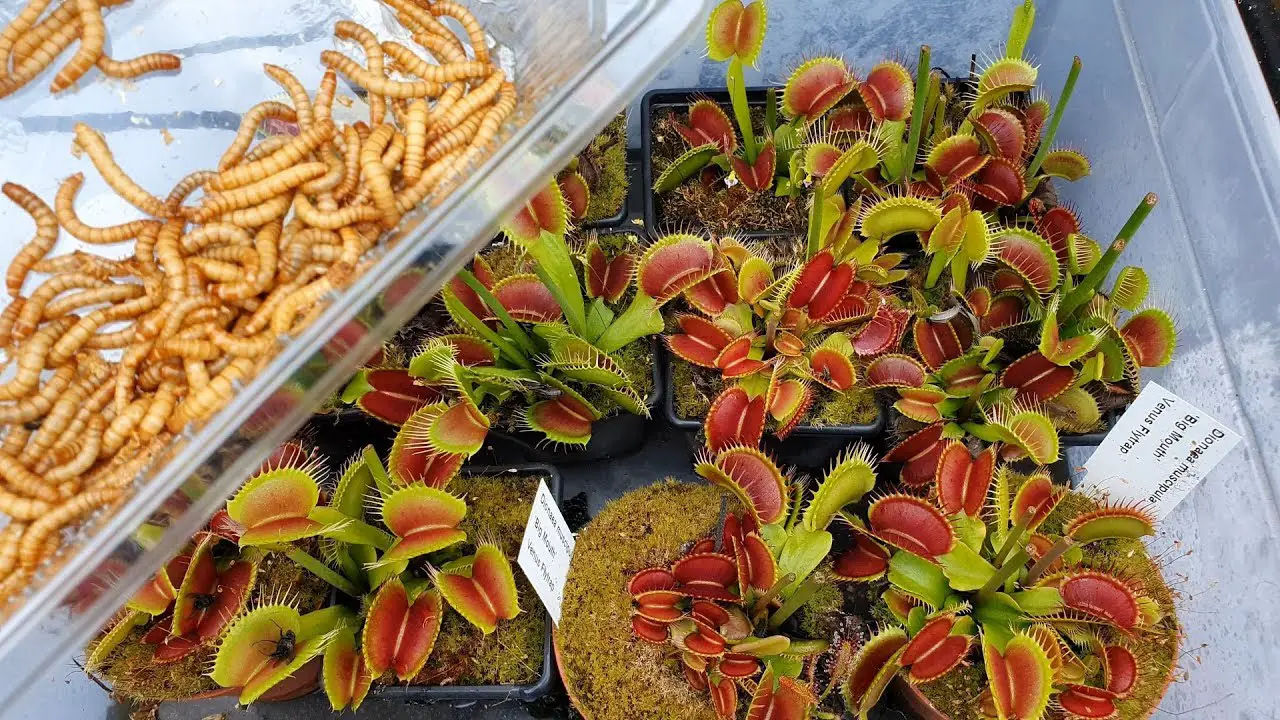Venus flytraps are carnivorous plants that many people grow indoors. They consume different insects by catching them with their heads.
When the trigger hairs are being touched, the trap closes and the plant starts injecting digestive enzymes into the prey.
Most often, the Venus flytrap’s diet consists of tiny insects that are easy to grab. No human food should be given!
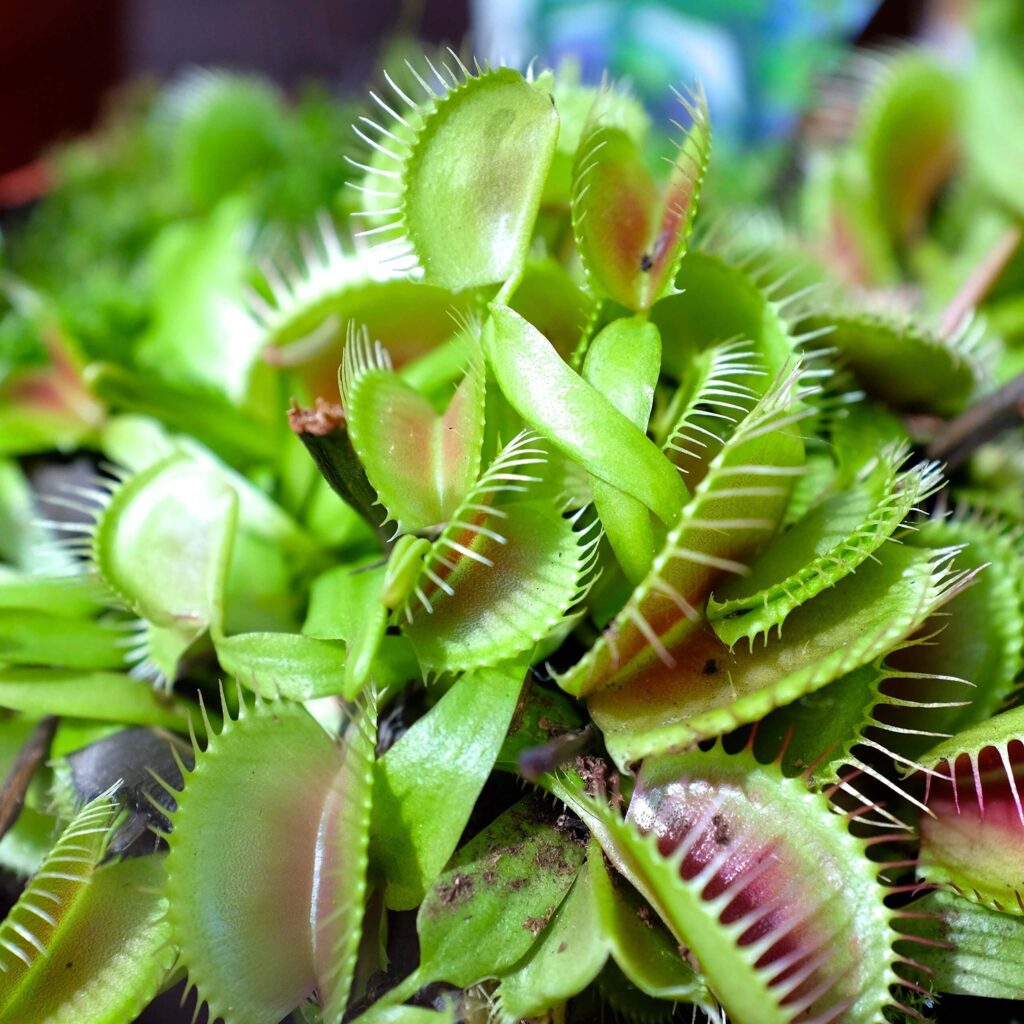
If you are wondering can Venus fly traps eat mealworms or not, this article will give you a detailed answer.
You will find what is the correct way to feed flytraps and what insects are the best choice to keep your Venus flytrap healthy.
Can Venus fly traps eat mealworms?
Mealworms are known for having lots of nutrients that will benefit a Venus fly trap, resulting in plant growth. The only disadvantage is the size of mealworms. They are too big to fit into the Venus Flytrap’s head.
In a natural inhabitant area, Venus Fly traps are highly unlikely to consume mealworms. The same applies if the Venus flytrap lives outdoors. Only the indoor Venus flytraps eat mealworms as part of their diet.
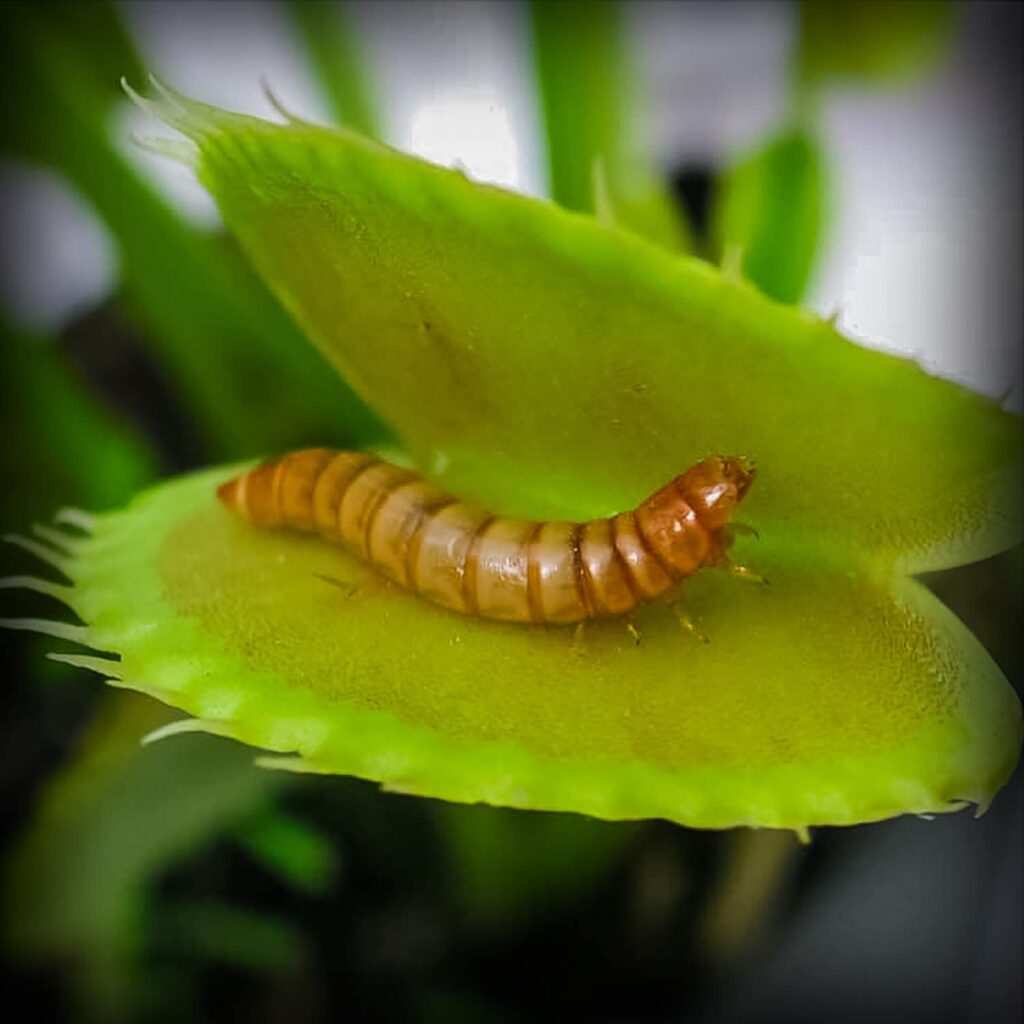
You have to measure the size of your plants before you decide feeding Venus flytraps mealworms. The mealworms mustn’t be bigger than one-third of the size of a plant’s trap.
The Venus fly trap won’t cope with a bigger insect. If you have other options for tiny insects, opt for them. If you don’t have a choice, you need to know the correct procedure for feeding Venus Flytraps mealworms.
How to feed mealworms to the Venus flytraps?
You already know that the Venus flytrap carnivorous plants can digest mealworms as long as the size is appropriate. What is the right way to feed mealworms to the Venus flytrap?
1. Feeding live mealworms
One of the options is placing a live mealworm straight into the Venus flytrap’s head. Ensure the size of the mealworm is not too big, so your plant can digest it. Once you place the mealworm onto the head, it will start wriggling, touching the trigger hairs. A Venus flytrap will close its trap.
You can use tweezers or fingers for feeding Venus Flytraps. Just make sure the size of the mealworm you are giving is not bigger than one-third of the plant’s head. The easier option will be chopping a mealworm into pieces.
2. Feeding chopped mealworms
If the mealworms are too big for your Venus flytrap, but you still want to feed live mealworms, the option of chopping the heads off is the most suitable.
That way you can make sure the sizes of the pieces are suitable for the traps and the mealworm will stop moving too much, giving enough time for the head to respond and close.
If the mealworms aren’t alive anymore, after placing them into the Venus flytraps’ heads, you will have to irritate the hairs manually. Use tweezers or a stick to initiate the trap closure.
3. Feeding freeze-dried mealworms
The downside of feeding dead mealworms is the lack of nutrients. They won’t be as beneficial as live creatures, but they still can be given to Venus Flytraps. Remember to touch the hairs of the Venus Flytrap once you have placed food onto the trap to make the plant close it. Freeze-dried mealworms are a perfect substitute when you don’t have any live insects to give to your Venus fly trap.
4. Feeding using tweezers
Tweezers are very helpful when it comes to feeding carnivorous plants such as Venus Flytraps. They allow you to grab an insect firmly and deliver them right to the plants without dropping them. You can select the size you want, so it is comfortable for you to hold. Ensure the tweezers hold insects tight to avoid leaving a mess everywhere.
5. Feeding using your fingers
If you don’t have tweezers, you can always use your fingers to feed your Venus Flytraps insects. When you use your fingers to deliver food to the carnivorous plant, make sure the distance is safe before you drop insects. That way, you will not have your fingers caught in a trap. The most important thing is not to touch the hairs that trigger the closing process of the Venus flytrap’s head. Then you should be safe.
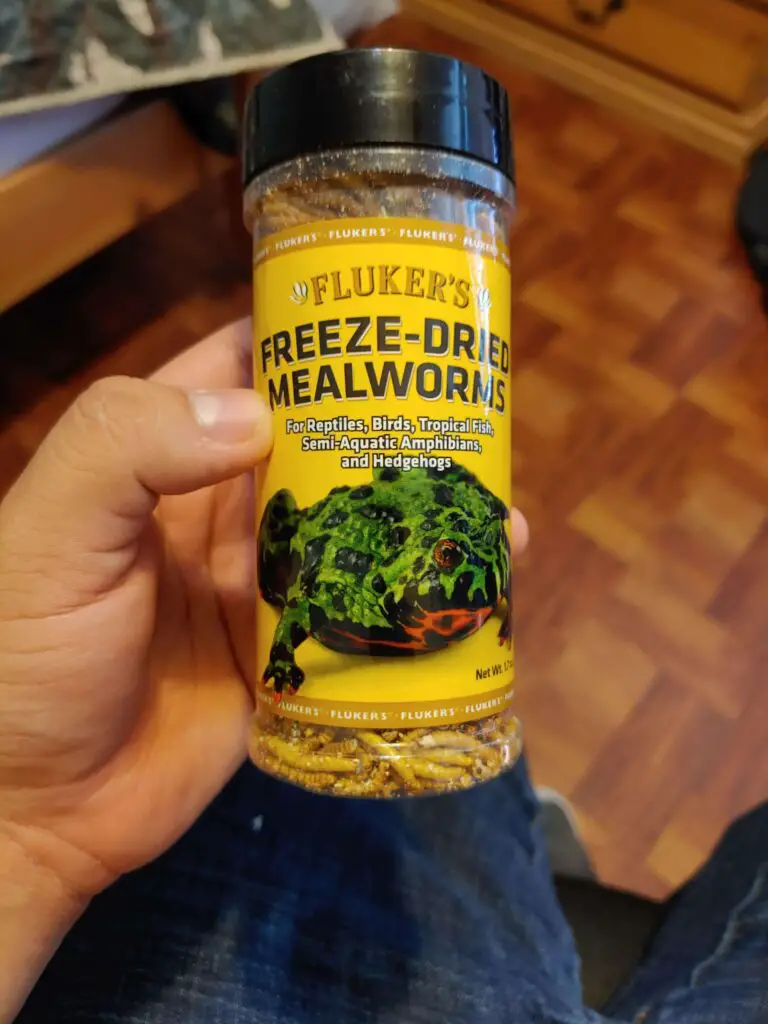
How many mealworms can a Venus Flytrap eat?
Each trap of your carnivorous plant should get one mealworm. It will also depend on the size of the mealworm. It shouldn’t be bigger than one-third of the trap’s size. If the mealworm is long, you should chop it into smaller pieces before you feed your Venus Flytrap.
If you feed dried mealworms, the size defines the portion required for every trap of the Venus flytrap. Feeding mealworms to the carnivorous plant is easy as long as you know the details.
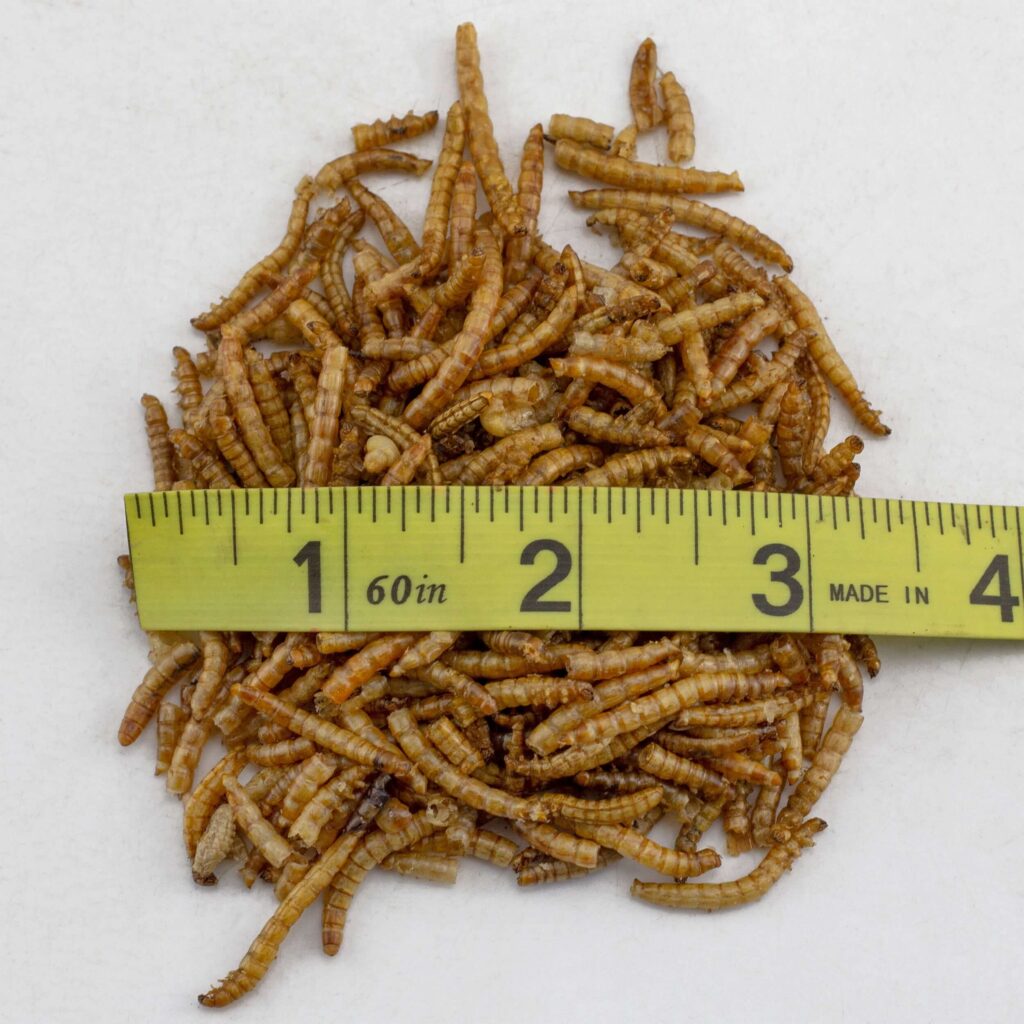
How often should you be feeding Venus flytraps with mealworms?
Smaller carnivorous plants such as Venus flytraps can live without eating insects for a long time. The Venus flytraps that grow outdoors are likely to receive enough insects, their nutritious food source. If you have plants growing indoors, you have to feed them by giving flytrap mealworms and other small bugs.
Feeding Venus flytrap mealworms will deliver nutrients and vitamins, so you can grow healthy plants. Just remember, if Venus flytraps already had other insects, giving them dried mealworms would be pointless.
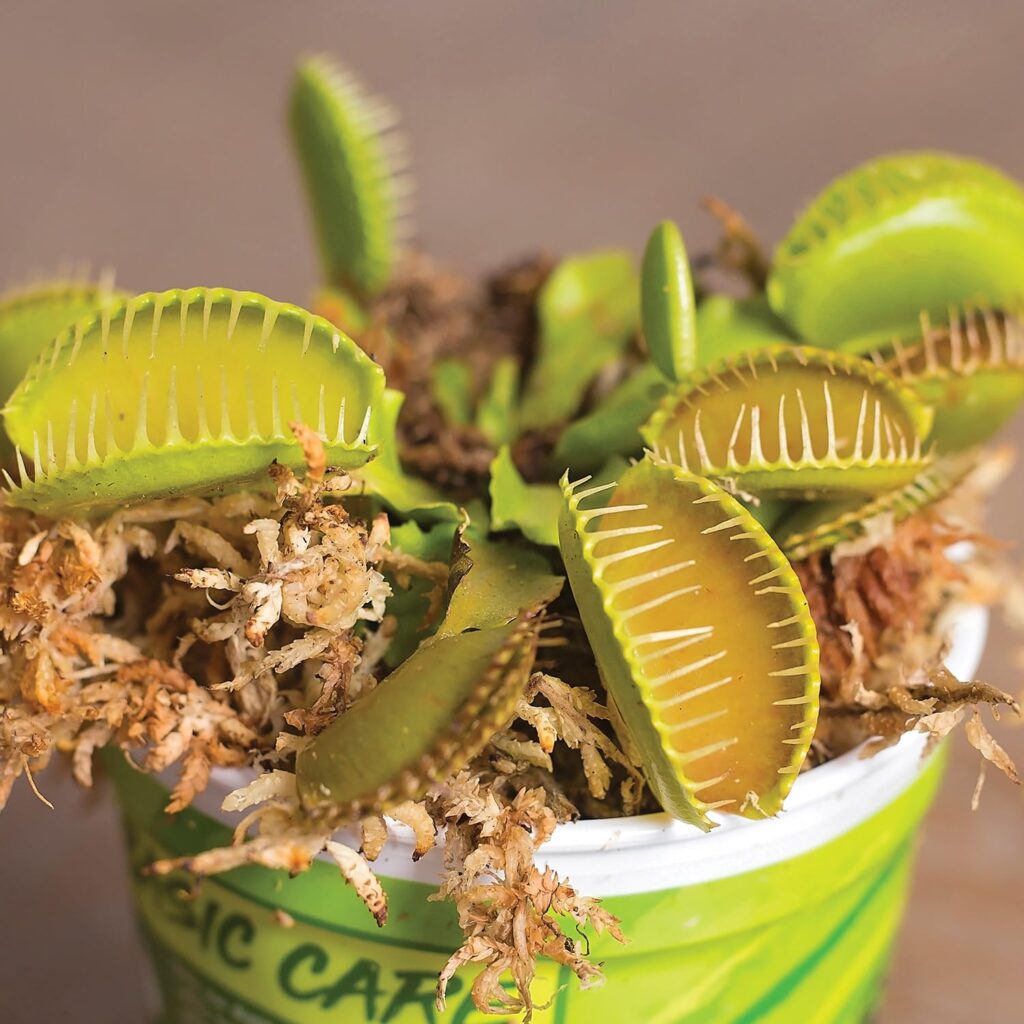
The important thing to know the Venus flytraps shouldn’t be fed mealworms or anything else during winter dormancy.
Winter dormancy is the time of the year when Venus flytraps and other carnivorous plants don’t eat anything, as there are no active insects in natural inhabitant areas. So, the Venus flytrap becomes inactive and doesn’t eat mealworms or any other bugs.
Once this period is over, you can start feeding your plant mealworms as a natural food source for maintaining a Venus flytrap’s diet.

What else can Venus flytraps eat?
You can feed Venus Flytrap mealworms and other insects. What else is safe to give to the plant?
- Slugs or snails. They contain a lot of nutrients your plant will be happy with. It is required to remove shells off the snails before giving them to the plant. Remember to check whether the size is suitable for the size of the traps.
- Beetles. It is very difficult to catch a beetle outside. They move fast, and the trap doesn’t close fast enough to catch it. If you have dead beetles, you can give them to your plant as long as they aren’t too big.
- Spiders. Spiders are also a good alternative to mealworms as they contain nutrients and vitamins. They are too fast, and it is best if you feed them freeze-dried. Dead bugs should be placed in the middle of the trap and then the hair should be touched gently, so the trap closes.
- Flies. As they are too fast, the plant is unlikely to catch it on its own. That is why the option is giving Venus fly trap dead flies that can’t escape. Ensure you initiate the closing process of the trap for the digesting process to kick in.
- Grasshoppers. They will have to be cut into small pieces in order to fit into the traps. Stick one in the middle of the trap and touch the trigger hairs. The trap should have enough time to close before a grasshopper will jump out.
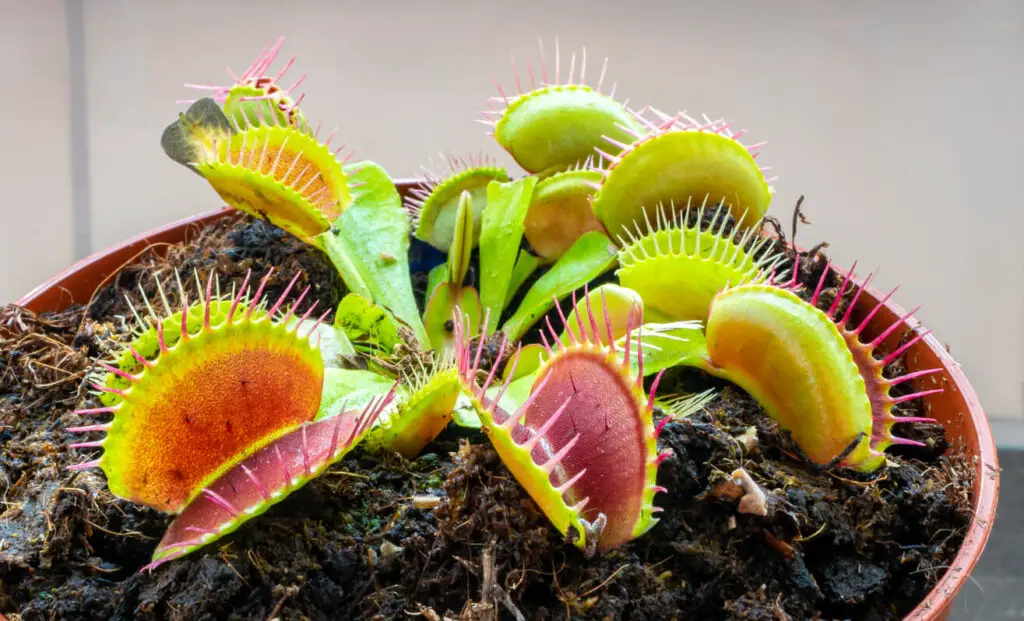
FAQ
What should you not feed a Venus flytrap?
Human food is certainly something that should never be given to your Venus flytrap. It won’t be able to digest it and the trap will just die.
You should also remember not to touch the hairs unless there is food lying in the trap. Every head of the plant has a limited number of times it can open and close. The average there should be a couple of insects a month for every trap.
Can carnivorous plants eat live mealworms?
You can feed your Venus flytrap live mealworms to enrich their diet with extra nutrients and vitamins. The size of mealworms shouldn’t be bigger than 1/3 of the trap size.
That will help to keep the plant healthy. If the meal worms are too long, they can be chopped into pieces small enough to fit the traps. Each trap should get a portion of mealworms.
Is it OK to feed dead flies to Venus flytrap?
A Venus fly trap can eat dead flies, just you will have to help it activate the closing motion of the trap. Once you place the fly onto the trap, gently touch the hairs until the Venus flytrap closes its trap.
Venus flytraps love eating insects and other bugs. If your plant grows indoors, ensure you feed your Venus Flytrap to maintain its natural diet.
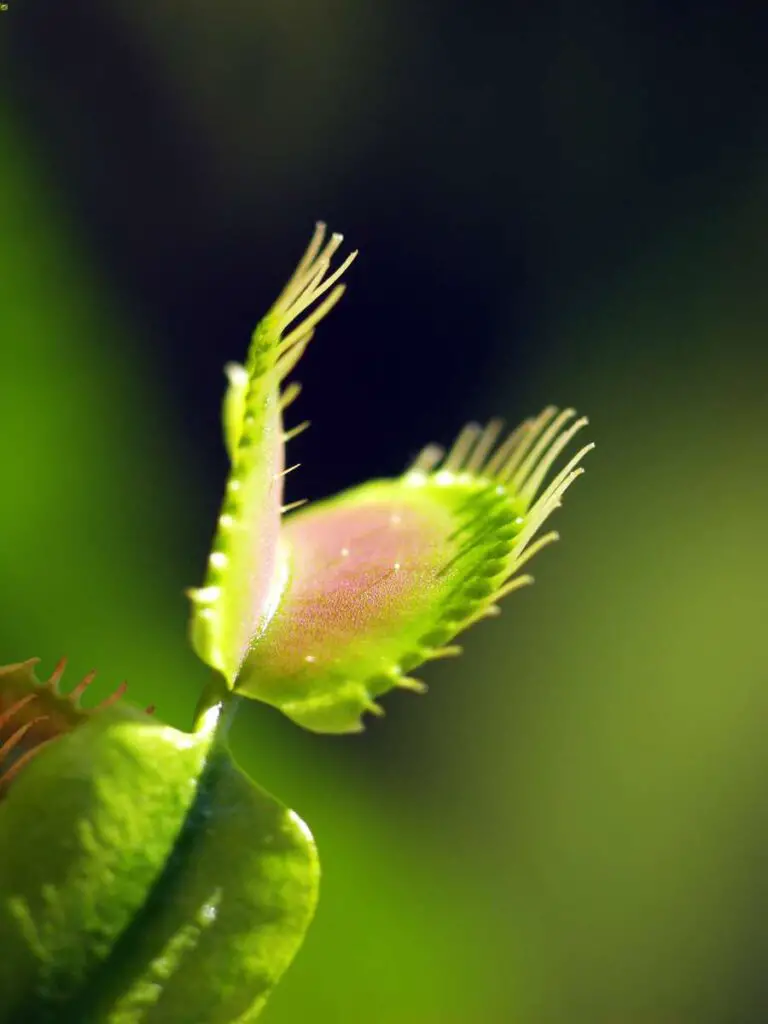
Conclusion
Now you know that Venus Flytraps eat mealworms. When you feed your Venus flytrap, just like any other carnivorous plants, you should use tweezers for holding food.
Place mealworms into the trap and touch the hairs to activate the closing motion. Once the trap is closed, your Venus flytrap starts producing digestive enzymes, which break down the insect.
When Venus flytraps eat mealworms they get all the necessary nutrients that help to maintain a healthy diet.
Dried mealworms can be mixed with a few drops of water before giving them to the Venus flytrap. Do not feed Venus flytrap during the winter season as they go into dormancy mode and don’t need to eat food.
If the information in this article was useful, please share it with your friends and other lovers of these carnivorous plants. If you still have questions, contact us in the comment section below.
